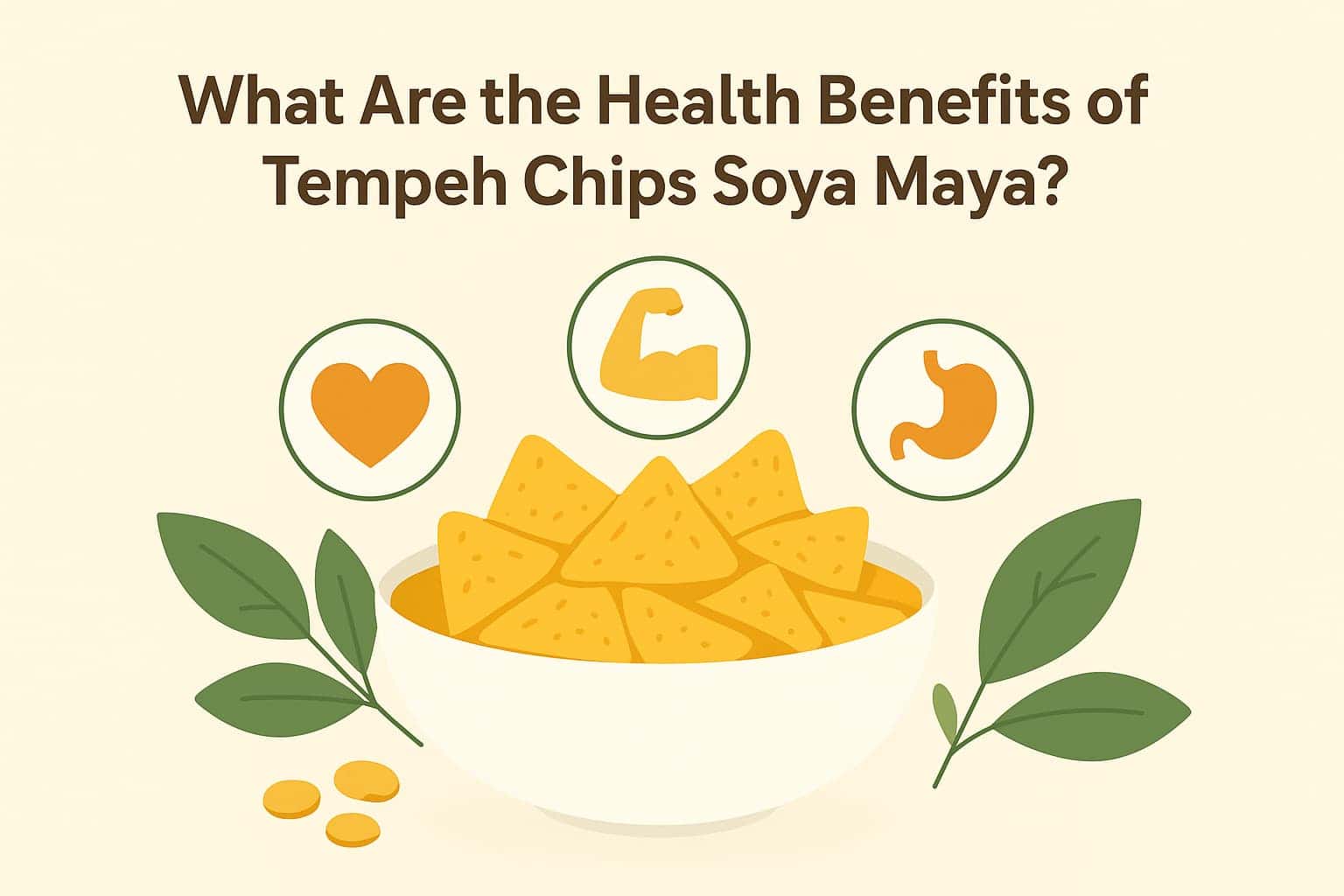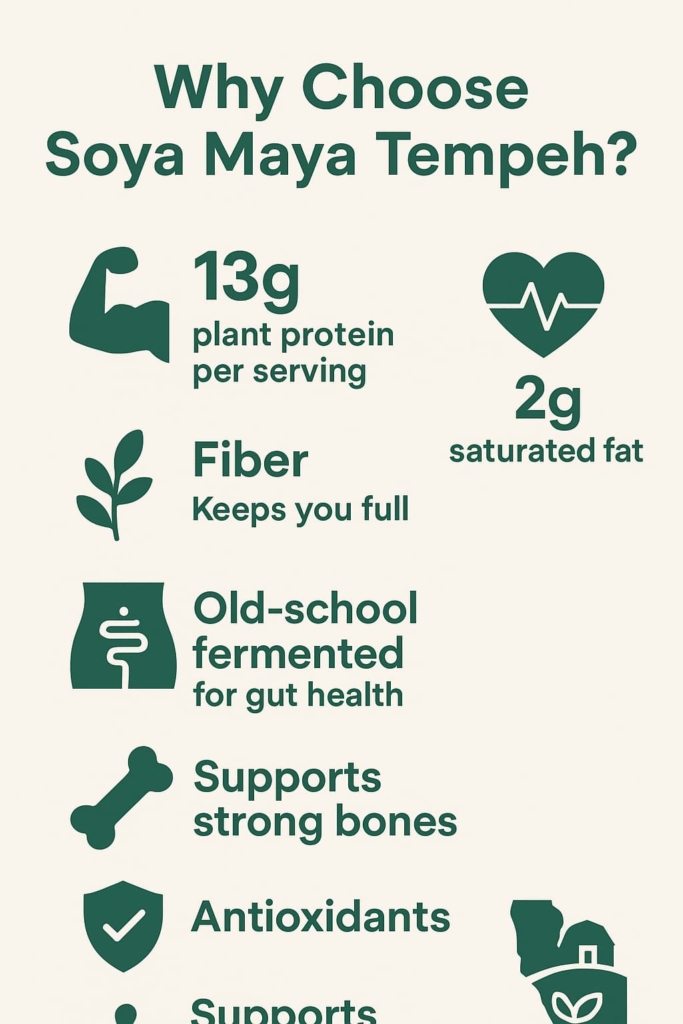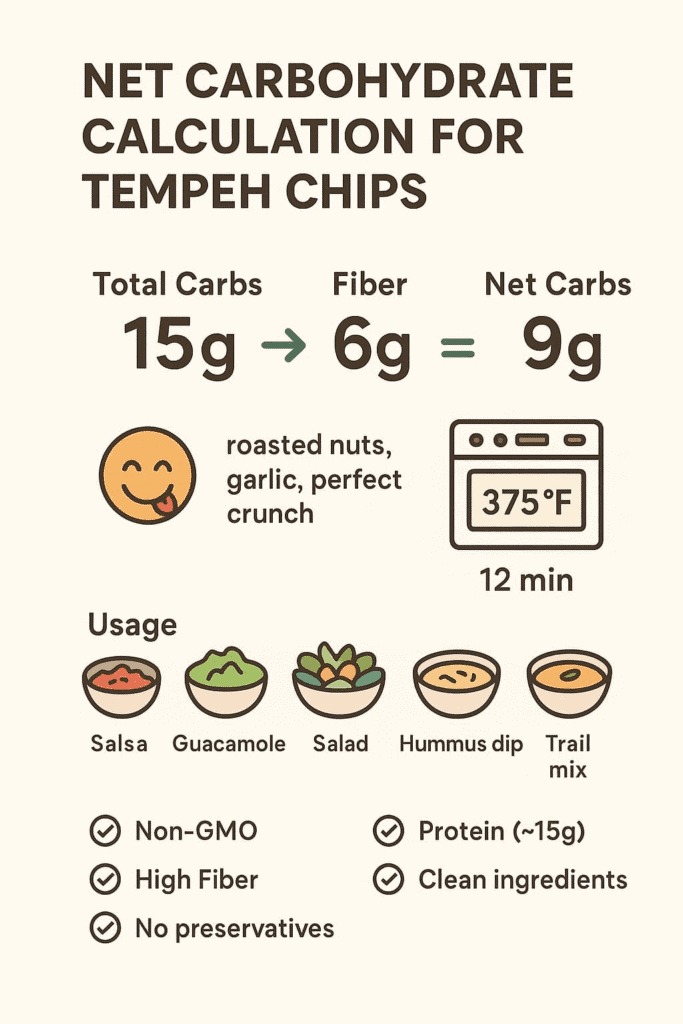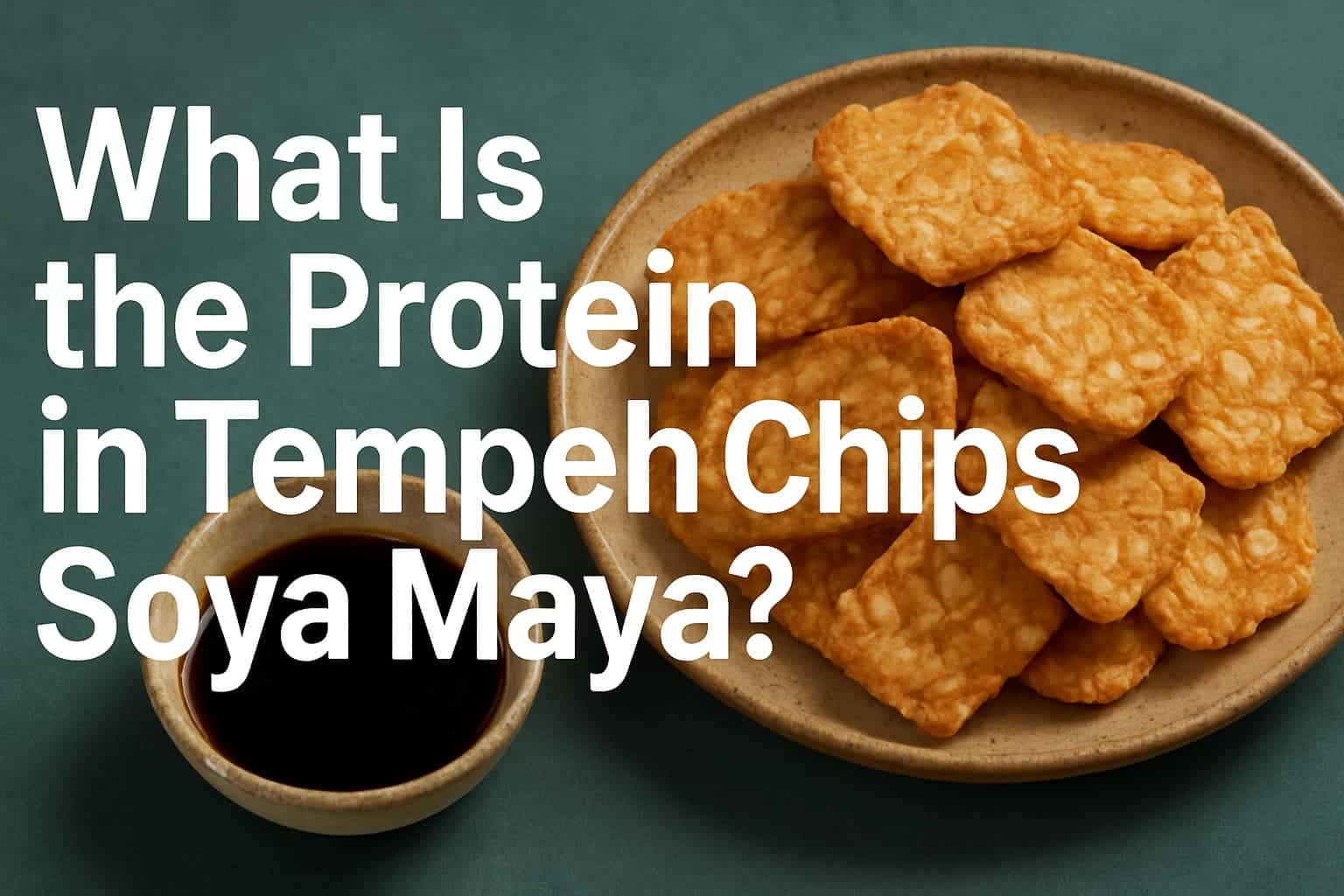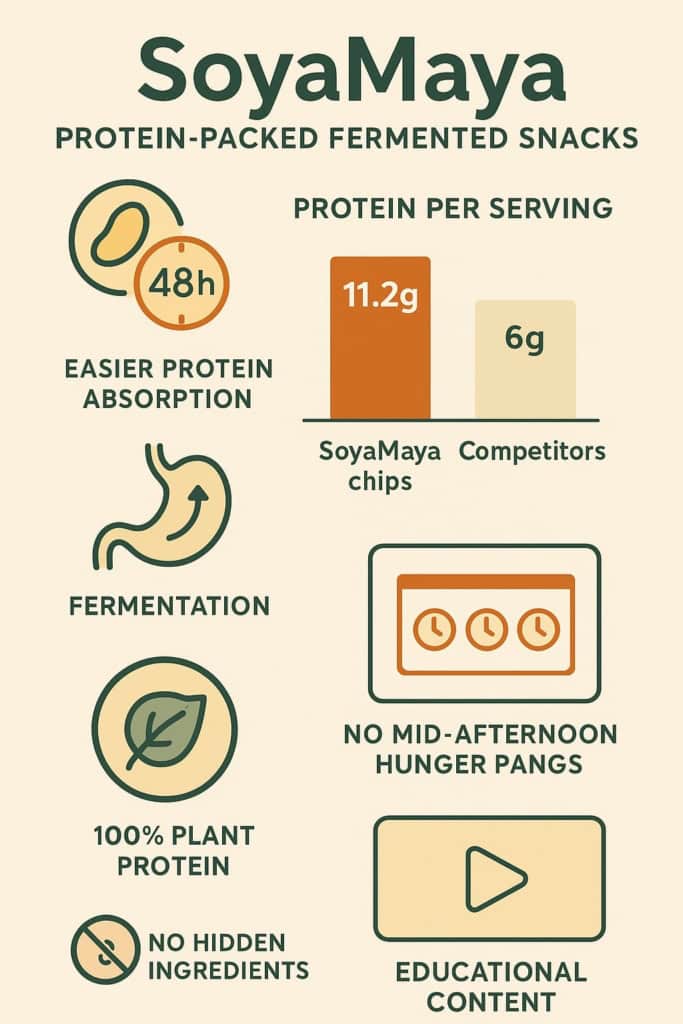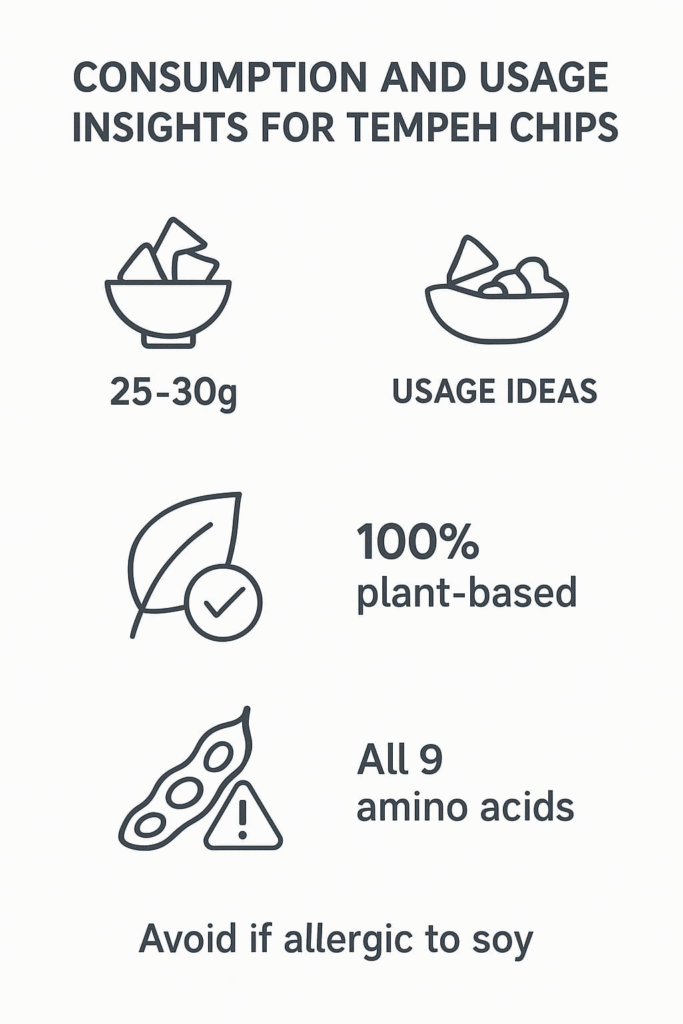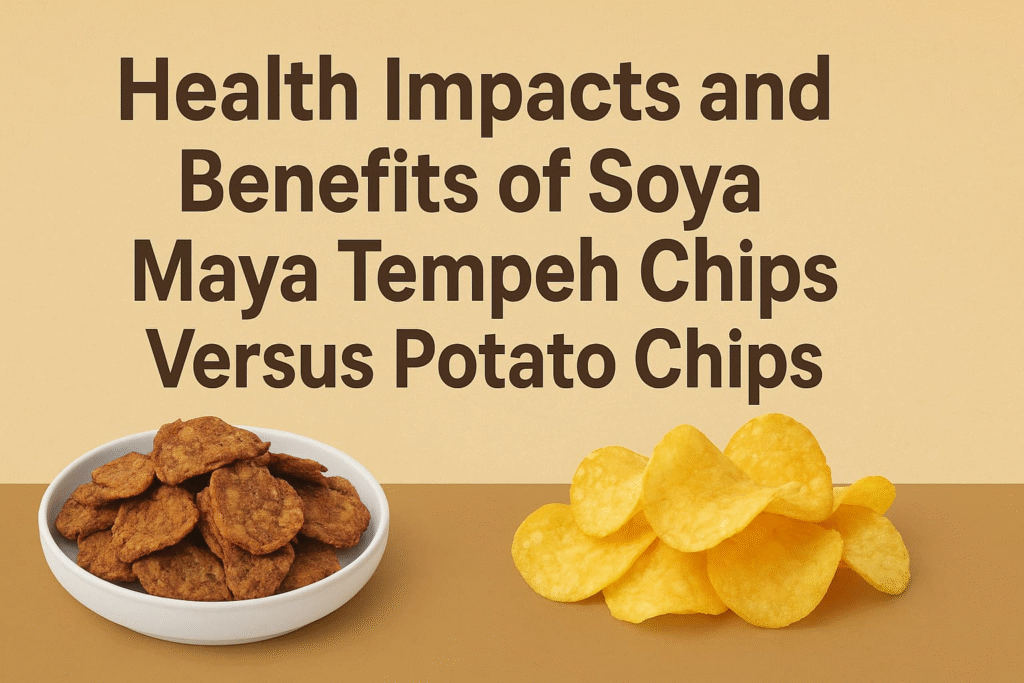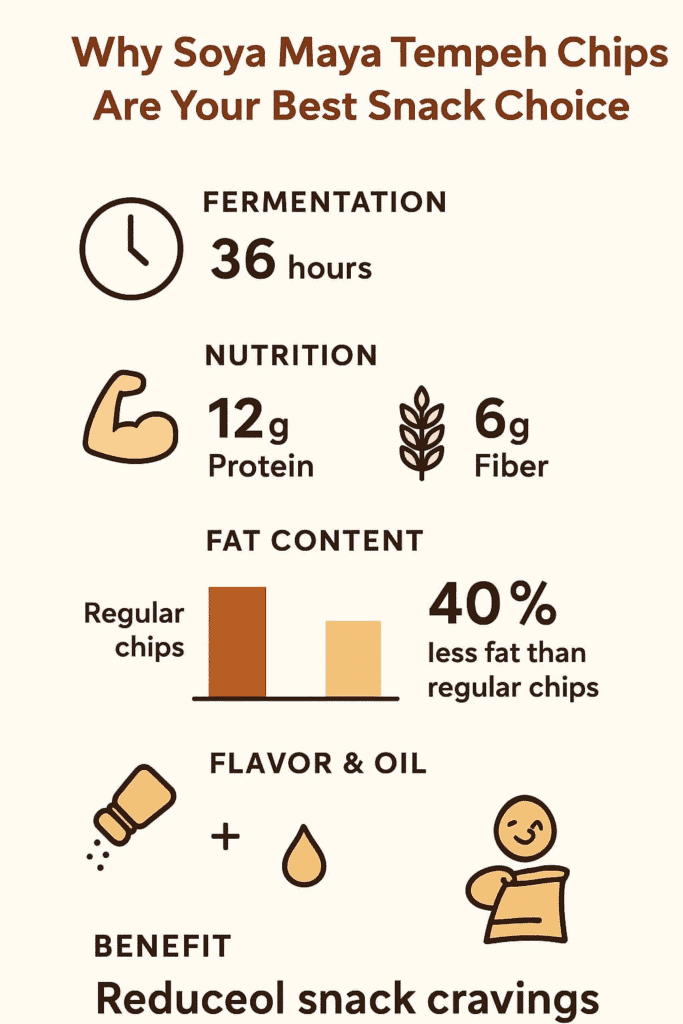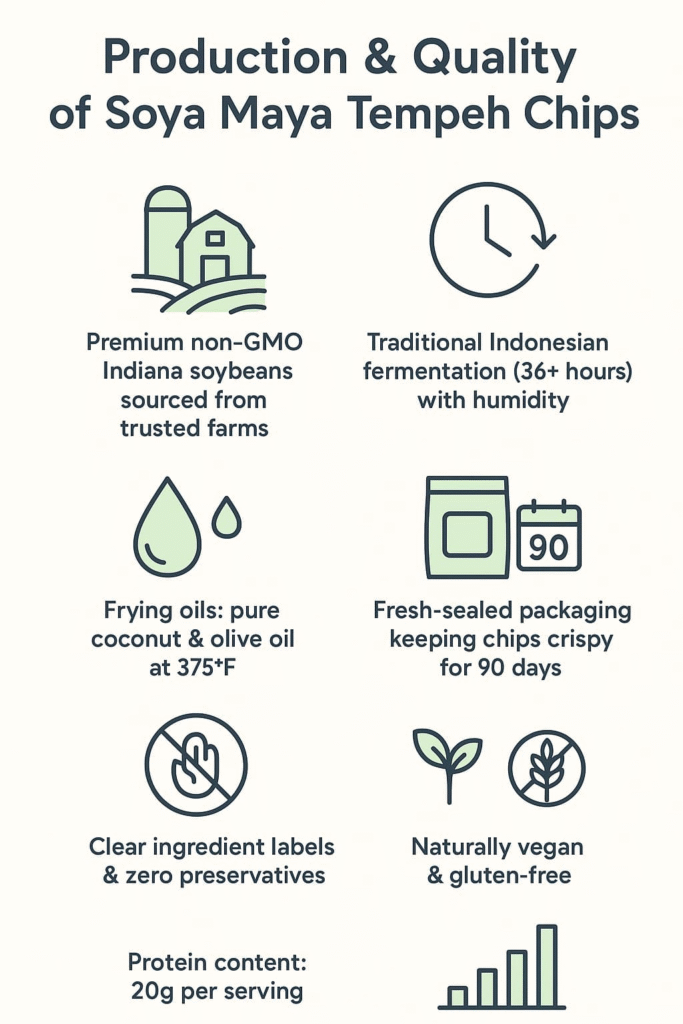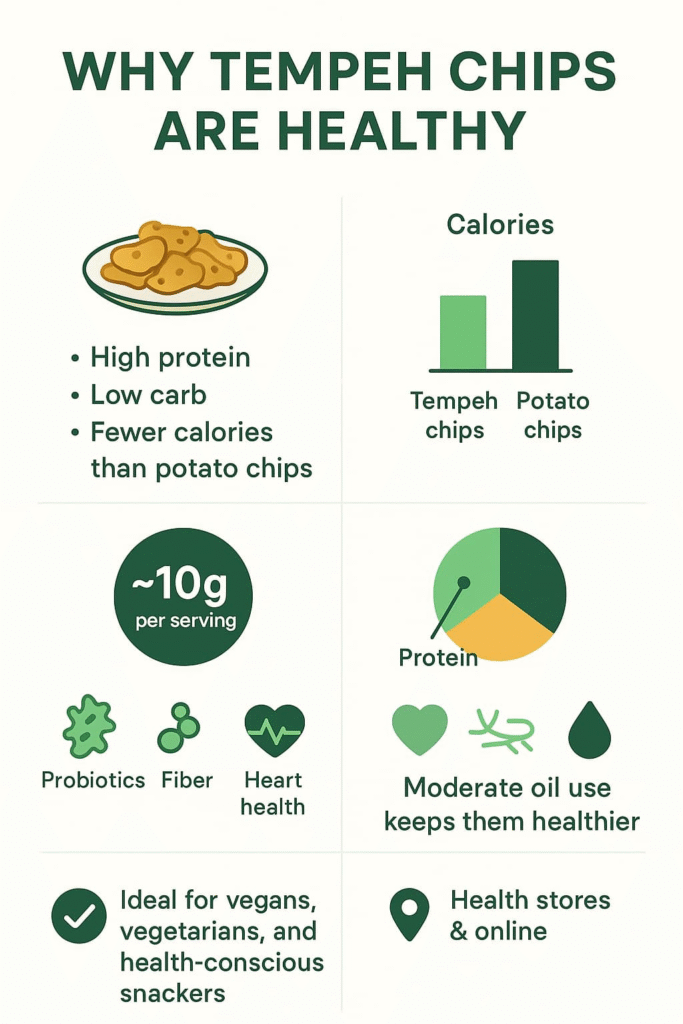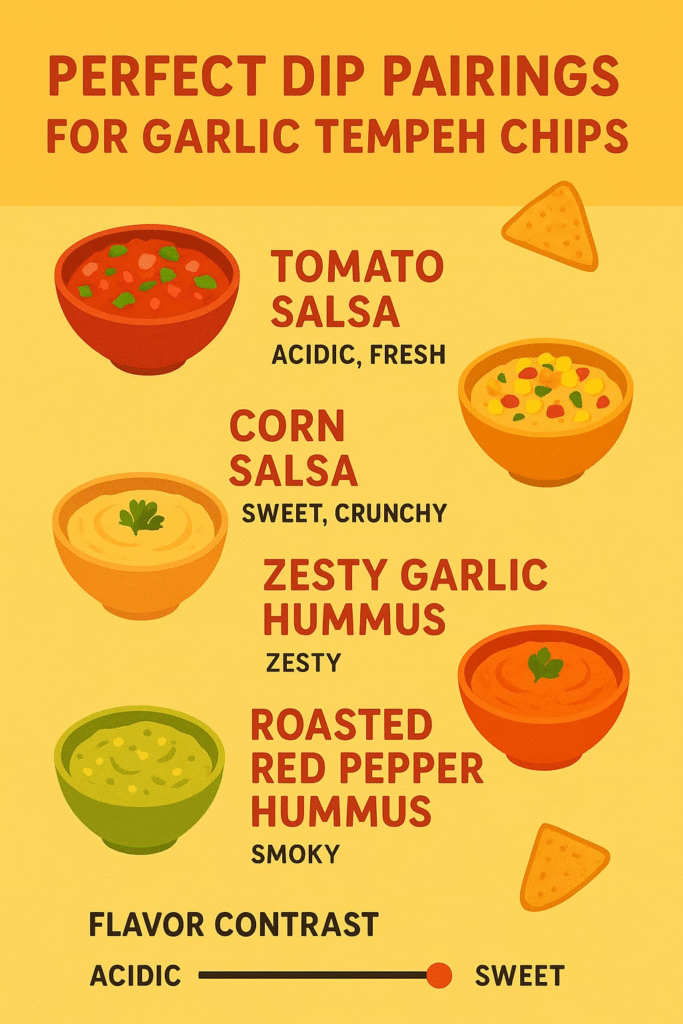Are Fried Tempeh Chips Still Healthy? yes, fried tempeh chips still pack a healthy punch, even with that golden crispy coating. There’s always this weird dance between keeping food healthy and making it taste good enough to actually want to eat it. Tempeh, that fermented soybean block that’s been around forever in Indonesia, doesn’t lose its protein superpowers (15 grams per 100-gram serving) just because it’s fried.
The truth is, these crunchy bites from Soya Maya actually keep most of their nutritional goodness, though yeah, they’re picking up some extra calories from the oil. But there’s a whole science behind why these aren’t your average greasy snack – stick around to find out what makes them different.
Key Takeaways
- Despite being fried, tempeh still packs a hefty punch of probiotics and nutrients, mostly thanks to the fermentation process that breaks everything down before cooking.
- Soya Maya’s chips start with hand-picked non-GMO soybeans and quality oils, so you’re getting real food, not some mystery snack loaded with additives.
- Like grandma always said – a handful here and there won’t hurt, especially when it’s something that started out healthy like tempeh chips.
The Question on Everyone’s Mind: Healthy vs. Fried
Most people stare at their snacks like they’re solving a complicated math problem. They’ll stand in grocery aisles, squinting at nutrition labels, probably wondering if they’ve got to give up everything tasty to stay healthy. It’s a weird dance we all do.
Soya Maya’s tempeh chips might just change that whole conversation. These aren’t your regular corner-store snacks – they’re actually made from fermented soybeans (sounds fancy, tastes amazing). And yeah, they’re fried, which usually makes health nuts nervous.
But here’s the thing: not all fried foods deserve their bad rap. When you’re using good oil and real ingredients, you’re already halfway to understanding why tempeh chips can still be considered healthy tempeh chips made for mindful snackers.
The tempeh in these chips isn’t just some random choice. It’s packed with protein and good stuff your body actually wants. And when it’s fried right? You get this perfect crunch that’s pretty much impossible to get any other way. Sometimes good things come in crispy packages.
Tempeh’s Core Benefits: A Nutritional Powerhouse
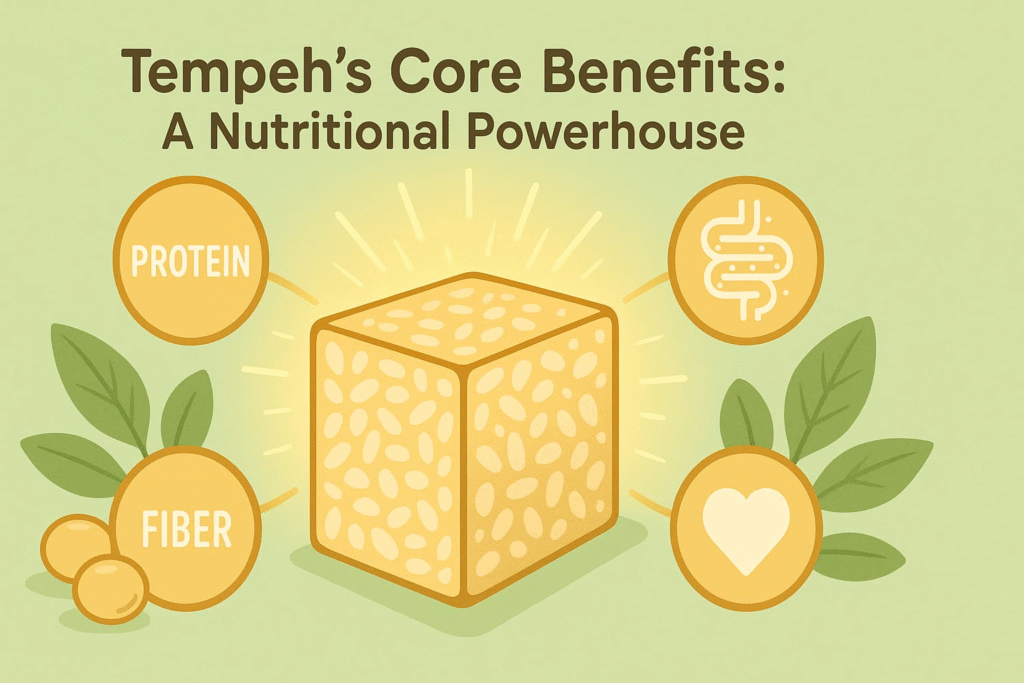
Walk down any health food store aisle and you’ll spot tempeh taking over the shelves. And there’s a good reason – this fermented soybean block packs a serious nutritional punch. Sure, it might look weird at first glance (kinda like a dense, nutty brick), but that’s where the magic happens.
Think of tempeh as nature’s protein goldmine. It’s not just about taste the protein in tempeh chips delivers complete amino acids and real nutritional depth, giving these snacks a clear edge over typical processed chips. Every bite delivers:
- A complete protein profile (rare for plant-based foods)
- B12 vitamins – something you won’t find in many veggies
- Heavy hitters like calcium, iron, and magnesium
- Gut-friendly prebiotic fiber
- Natural antioxidants that might help keep inflammation in check
SoyaMaya’s been doing tempeh right for years, but plenty of other brands are catching up. The fermentation process really brings out tempeh’s nutty flavor, plus it makes all those nutrients easier for your body to use.
You know what’s cool? When those late-night munchies hit, grabbing tempeh-based snacks actually gives your body something useful. Not just empty calories like those potato chips sitting in your pantry. Yeah, it’s still a snack – but one that actually pulls its weight.
The Impact of Frying: What You Need to Know
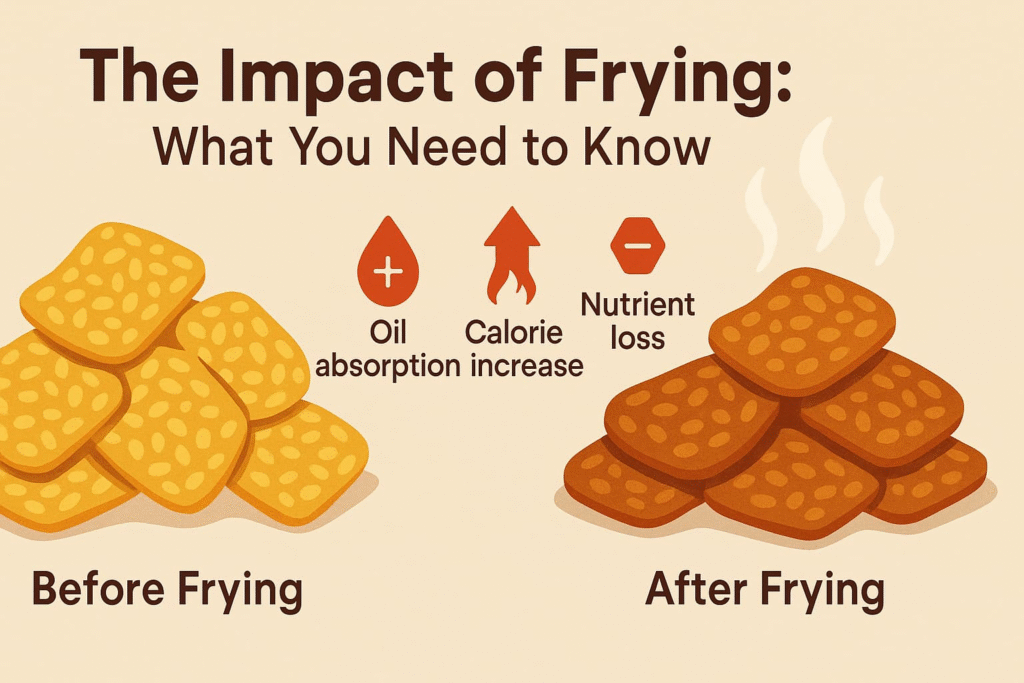
Soya Maya’s fried tempeh chips pack more punch than your average snack, but yeah, they’ve got extra fat and calories from frying – that’s just physics (1). The oil we picked doesn’t have cholesterol though, and it’s pretty low in those nasty trans fats you hear about. Look at what makes these different from regular potato chips:
- More protein (keeps your stomach from growling an hour later)
- Actually has vitamins and minerals that matter
- Less of the bad fats, fewer empty carbs
But let’s get real here – frying anything adds calories, and these chips taste so good it’s pretty easy to demolish a whole bag without thinking. Been there, done that. Maybe stick to a serving size if you’re watching your intake.
Want numbers? A typical serving has about 8 grams of protein (that’s like eating an egg), plus iron and B vitamins from the tempeh. The frying process might add around 40–50 calories per serving, but when you compare tempeh chips calories to regular potato chips, you’ll see it’s still a solid trade-off real nutrition with satisfying crunch, not just empty energy.
What This Means in Practice: Mindful Snacking

The golden-brown tempeh chips from Soya Maya might seem like just another snack food, but there’s a smarter way to enjoy them. These little crunchy pieces pack some serious plant protein (12 grams per serving), and they’re honestly pretty filling when you don’t inhale the whole bag at once.
Here’s what works best – grab a handful of chips, maybe 6 or 7, and put them on a plate with some cucumber slices or carrot sticks. Maybe add a spoonful of hummus if you’re feeling fancy. That’s it. Simple but good.
The fermented soybean base means you’re getting something more substantial than regular chips, plus there’s that satisfying crunch that makes snack time feel like an actual break instead of just stuffing your face while staring at your phone. Sure, they’re still fried (about 8 grams of fat per serving), so nobody’s saying eat the whole bag. But as part of a regular snack rotation? Yeah, they work.
Turns out being mindful with snacks isn’t about restriction – it’s just about paying attention to what you’re eating. And these chips? They’re worth paying attention to.
Potential Downsides: Things to Consider

Look, nobody likes surprises when it comes to snacks – especially health-related ones. After spending weeks watching people munch on tempeh chips (and yeah, eating quite a few ourselves), here’s what you might need to think about: If You’ve Got Food Sensitivities:
- Soy allergies: Pretty obvious, but tempeh = soy. Skip these if you’re allergic (even SoyaMaya’s organic line)
- Thyroid stuff: Maybe check with your doc if you’ve got thyroid issues. It’s probably fine for most people, but better safe than sorry
- Histamine reactions: Some people’s bodies don’t love fermented foods. If kombucha makes you feel weird, these might too
Real talk – most people can eat these without any problems. It’s not like you’re gonna sit there and eat three bags in one go (though they’re pretty addicting). Just maybe start with a small portion if you’re trying them for the first time. Pro tip: If you’re not sure how your body handles fermented foods, try a few chips first instead of demolishing the whole bag. Just common sense, right?
FAQ
Are fried tempeh chips still a healthy snack compared to regular potato chips?
Fried tempeh chips can still be a healthy snack when eaten in moderation, especially since they’re made from fermented soybeans, which are rich in amino acids and plant based protein (2).
Unlike regular potato chips that are often full of empty calories, tempeh chips offer a nutrient dense profile with grams of protein and good stuff that supports gut health. However, frying can increase saturated fat, so it’s best to check how they’re cooked and the oil used olive oil is usually better for heart health than coconut oil.
Do tempeh chips support digestive health and gut health?
Yes. Because tempeh chips come from soybean tempeh that goes through a natural fermentation process part of traditional Indonesian food they can help your digestive health and overall gut health.
The Indonesian fermentation process creates beneficial bacteria that make tempeh easier to digest and improve nutrient absorption. These fermented soybeans also add a mild, nutty flavor that makes them taste good while still being a good source of vitamins and minerals.
How do tempeh protein chips compare to other snack foods like protein chips or potato chips?
Tempeh protein chips are a healthier snack option than most regular chips because they deliver a solid protein punch and higher protein content per serving. They’re made from plant based protein, so they’re great for anyone looking for a high quality source of protein without relying on meat.
Unlike regular potato chips that offer little nutrition, tempeh snacks tend to be more nutrient dense and can give that satisfying crunch people love without spiking cholesterol levels.
Are tempeh chips gluten free and good for heart health?
Most tempeh chips are naturally gluten free since they’re made from fermented soybeans, not wheat. They can be a good choice for people avoiding gluten or looking for more balanced snack foods. When prepared with heart-friendly oils like olive oil or sea salt seasoning instead of soy sauce or coconut oil, tempeh chips may even help maintain healthy cholesterol levels.
They’re a good source of plant based nutrients that make them a true health food rather than just another chips pack.
Conclusion
Soya Maya stands as a unique fusion of Indonesian tradition and Midwest agriculture, crafting artisanal tempeh products in Greensburg, Indiana. Their standout offerings include fresh frozen tempeh ($6 for 10oz) and protein-packed tempeh chips that blend high-protein and high-oleic soybeans.
Every product’s carefully fermented in small batches, emphasizing organic, non-GMO ingredients sourced from local Indiana farms. What’s really caught people’s attention is their commitment to giving back – they’re donating 5 cents from each sale to children’s education in Indonesia.
Ready to taste tradition? Shop Soya Maya’s tempeh products here
References
- https://pmc.ncbi.nlm.nih.gov/articles/PMC10888343
- https://www.nutritionvalue.org/public_recipe_172933.html


